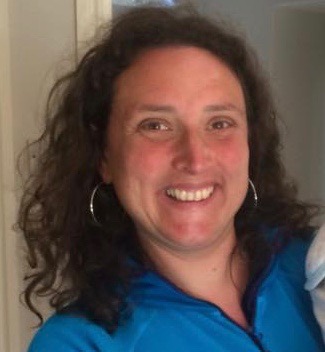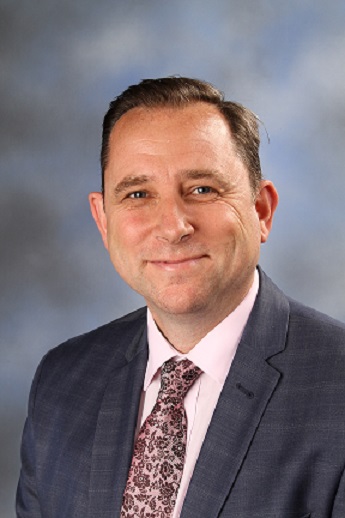 We are delighted to welcome Dr Niki Kaiser, Network Research Lead at Norwich Research School, to our blog series in which teachers involved in research give us their take on educational neuroscience.
We are delighted to welcome Dr Niki Kaiser, Network Research Lead at Norwich Research School, to our blog series in which teachers involved in research give us their take on educational neuroscience.
What does educational neuroscience mean to you?
Neuroscience helps me to link the ‘art’ of teaching to the science behind approaches that help me be a more effective teacher. Neuroscience is the science behind the ‘natural flair’ that great teachers appear to have, and it helps explains the mechanisms that help make learning more memorable.
It isn’t enough for me simply to be told how to apply approaches because “they’re evidence-based”, however strong that research base might be. I believe it’s just as important to understand why approaches are effective. By understanding why approaches work, I can hone my teaching of each topic within specific contexts.
For example, unless you understand why retrieval practice is effective, you might believe that it’s simply about asking students a few questions here and there. “Low-stakes quizzing: tick! I’ve now “done retrieval practice”! But knowledge of why retrieval practice works means I realise that it’s not just the questions or the quizzes themselves that are important, but rather the process of bringing information to mind. For example, for long-term retention, it appears to be more effective to retrieve information 70% correctly than to re-read 100% correct information (Smith et al., 2013). Understanding this can inform how and when (and why) you embed retrieval practice on a day-to-day basis.
This understanding of why approaches are effective is where neuroscience comes into the equation, for me. Neuroscience helps us to understand how and why empirically-based approaches, grouped under an umbrella of the Science of Learning, are effective. And also how they might be developed further.
How do you keep up to date with the latest research?
Our school is an EEF research school. We receive regular news and updates via the Research School Network at meetings, via email, and through conversations with colleagues.
Networks are important to me (see my article on this), and last year, I helped to form a group called #CogSciSci, an online peer-support network with over 500 teachers, who regularly share ideas and questions about applying The Science of Learning to science teaching. The teachers on this forum are an amazing and generous bunch, who constantly keep me on my toes as they point out things they’ve read, ask pertinent questions, and discuss key research.
I can access research articles via my membership of the Chartered College of Teaching, and their recent edition of Impact on the Science of Learning was excellent.
I also spend rather a lot of time of Twitter (!), and find myself regularly disappearing down rabbit holes, as I follow up links and leads to interesting research. Signing up to email lists is another way to keep abreast of what’s out there. I receive regular updates from the Education Endowment Foundation and the Institute for Effective Education.
Can you give some examples of how neuroscience understanding has helped you and your school?
An understanding of what we mean by learning, and how this links to the model of memory, has really helped shape my approach to planning and teaching. I now consider the limitations of working memory at all points, so I can better support long-term learning and retention.
I understand the benefits of spaced review and retrieval practice, and of encouraging my students to develop automaticity, thus freeing up their working memory to process the more interesting, higher-level thinking needed in science.
One of my rules of thumb when introducing new approaches is that it shouldn’t take me too far away from “business as usual”. And it shouldn’t increase my workload. So I embed research-informed ideas by tweaking what I do, rather than totally re-working everything.
However, this demands a deeper understanding of the underlying research, so I particularly enjoyed the review by Weinstein 2018 as a very readable overview, and a gateway to further reading. It picks apart the “6 strategies for effective learning” from the Learning Scientists website and goes into depth about exactly what the research behind them does (and doesn’t) say. For example, they ask whether spaced practice can ever be effective enough to completely alleviate the need or utility of a cramming period, which is just the kind of question teachers ask themselves. And I like Karpicke, 2008, because the results are so striking. When you compare the re-test and re-study groups, and see how much more effective it was to re-test, it really hammers the point home that it is worth doing (despite students actually feeling less confident at the time, compared to the re-study group). This was explained particularly effectively by Efrat Furst who spoke at one of our Research School meetings last year.
I do quiz students at the start of each lesson, which is a low-maintenance approach to retrieval practice, but I’m also careful to introduce as many opportunities as possible for students to think hard and work to bring information to mind. I also plan in spaced review opportunities via my normal class and homework activities, rather than reworking the entire curriculum.
How do you get teachers and students involved?
We are a Research School, and we share ideas via our newsletter and website. But we are very much of the mindset that “schools listen to schools and teachers listen to teachers”, so we are working hard to build a network of research-informed teachers in and around Norwich. We meet half-termly to share ideas and hear from others, and at a recent meeting, Dr Flavia Belham presented ideas around memory and learning.
Within school, all staff meet in groups to discuss research and how to apply it, as part of our whole-school CPD system. We also have a school Journal Club, and various initiatives, such as a Research Bulletin summarising research and case studies of how it’s been applied in school.
I have used Dunlosky’s toolkit to help encourage students to study more effectively, and this has helped them to move away from simply reading through their books and making beautiful notes towards more impactful study approaches. But I am careful to explain to them how and why certain strategies are more worthwhile than others, even though they might feel harder at the time. An understanding of the research helps me to sell these “desirably difficult” study approaches to them.
 In this regular series, we hear from teachers and heads about their views of educational neuroscience. Has ed neuro helped them with their teaching? How? Are there problem areas? Are there gaps where research should be focused? Today, we are delighted to introduce Jo Pearson, Head of Oldham Research School and Teamworks SCITT (School Centred Initial Teacher Training) and TSA (Teaching School Alliance). Welcome Jo!
In this regular series, we hear from teachers and heads about their views of educational neuroscience. Has ed neuro helped them with their teaching? How? Are there problem areas? Are there gaps where research should be focused? Today, we are delighted to introduce Jo Pearson, Head of Oldham Research School and Teamworks SCITT (School Centred Initial Teacher Training) and TSA (Teaching School Alliance). Welcome Jo!


